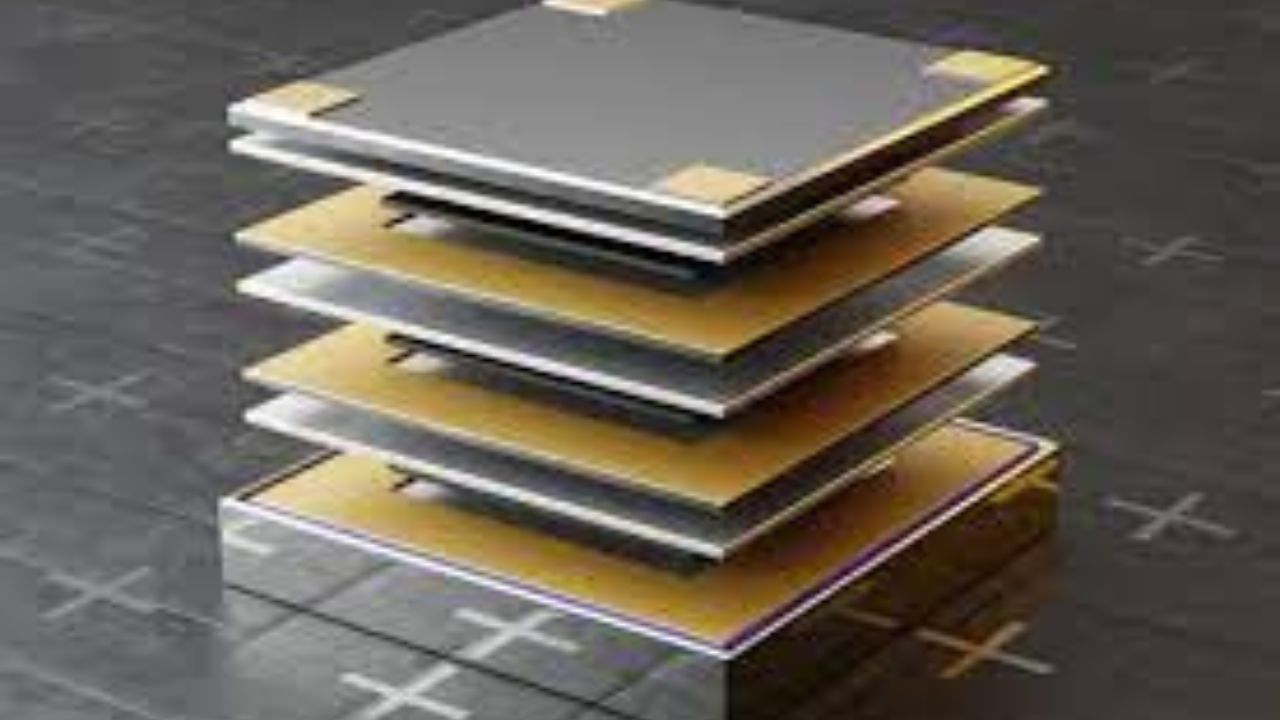In a world tethered to the humdrum of power cords and charging rituals, the promise of uninterrupted energy for 50 years sounds more like science fiction than reality. However, the groundbreaking nuclear battery developed by the Beijing-based startup Betavolt is set to redefine how we power our lives, ushering in an era of energy independence and sustainability.
Breaking Free from the Plug: China's Nuclear Battery
Our current reliance on lithium-ion batteries comes with its fair share of challenges. These powerhouses degrade over time, necessitating frequent replacements and adding unwanted weight to our devices. The perpetual dance with charging cords and dwindling battery percentages has become a familiar frustration. Enter Betavolt's nuclear battery – a tiny marvel, smaller than a coin, offering a radical departure from these limitations.
No more charging, no more replacements – just a constant source of power for an unprecedented 50 years. The science behind this miniature powerhouse lies in the ingenious use of radioisotope thermoelectric generators (RTGs), a technology with a proven track record in space exploration. Betavolt has taken this technology and miniaturized it, coupling it with a special thermoelectric converter. This transformative process allows the battery to generate electricity from the natural decay of radioactive isotopes, specifically nickel-63, offering a reliable and continuous power supply.
A World of Possibilities: China's Nuclear Battery
The applications of this revolutionary technology are vast and transformative. Picture a world where your smartphone never dies, drones patrol endlessly for environmental monitoring, medical sensors provide constant care, and spacecraft venture further into the cosmos. These scenarios are not distant dreams but potential realities shaped by Betavolt's nuclear battery.
Addressing the Concerns: China's Nuclear Battery
While the promises are alluring, the introduction of nuclear technology understandably raises concerns. Betavolt emphasizes the meticulous design and rigorous testing of their batteries to meet the highest safety standards. The amount of radioactive material used is minuscule, securely contained to pose minimal risk. However, the long-term disposal and potential misuse of these batteries require careful consideration and robust regulations. Transparent communication and public discussions are essential to ensure the responsible development and deployment of this groundbreaking technology.
The Road Ahead: China's Nuclear Battery
Betavolt's nuclear battery is still in its early stages, requiring further research, testing, and regulatory approvals before becoming a commercial reality. Despite the challenges, the potential rewards are immense. This tiny powerhouse could usher in a new era of energy independence, free from the constraints of conventional batteries, and power a future where our devices are less tethered to the grid and more empowered by the invisible power of the atom.
Beyond the Battery: China's Nuclear Battery
China's nuclear battery is not just a technological marvel but a piece of a broader puzzle in the quest for clean and sustainable energy. As we move away from fossil fuels, technologies like nuclear batteries, along with renewable energy sources and advancements in energy storage, will play a critical role in powering our future. The path ahead may pose technological challenges, environmental concerns, and political considerations, but the potential rewards – a future powered by clean, reliable, and potentially long-lasting energy sources – are within our grasp.
The Dawn of Perpetual Power: China's Nuclear Battery
The potential reality of a charge-free future is not far-fetched, thanks to China's nuclear battery. Imagine a world where your phone never needs to be plugged in again, where medical sensors tirelessly report data, and drones patrol vast stretches of land, all fueled by a revolutionary energy source that lasts for 50 years. Betavolt's nuclear battery, no larger than a coin, is set to change the game by harnessing the power of radioisotope thermoelectric generators (RTGs).
A Tiny Powerhouse: Breaking Down the Technology
Developed by Betavolt, this nuclear battery leverages the natural decay of radioactive isotopes, specifically nickel-63, to generate heat. The innovation lies in the miniaturization of the technology, with the battery's size comparable to a coin. The heat produced by the decay is converted into electricity through a thermoelectric converter, offering a constant trickle of energy for an unprecedented 50 years.
A Game-Changer for the World: China's Nuclear Battery
The potential applications of Betavolt's nuclear battery extend far beyond personal gadgets. Envision a world where smartphones never run out of power, medical devices operate reliably for decades, and environmental monitoring sensors provide invaluable data for years on end. The nuclear battery could revolutionize diverse sectors, offering a clean and sustainable energy solution where traditional options fall short.
Facing the Challenges: China's Nuclear Battery
While the nuclear battery presents a revolutionary solution, challenges such as safety and cost cannot be ignored. Betavolt assures that safety is a top priority, with multiple layers of containment and rigorous safety protocols. The cost, initially higher than traditional batteries, is expected to become more competitive as production processes are refined.
The Road Ahead: A Charge-Free Future Beckons
The successful development of the nuclear battery marks a turning point in our pursuit of clean and sustainable energy. Despite the challenges, this technology offers a glimpse into a future where devices operate with perpetual power. As Betavolt continues to refine its technology and address concerns, the whispers of a charge-free future grow louder, promising a world where energy flows freely, untethered from cords and chargers.
Join the Conversation: China's Nuclear Battery
What are your thoughts on China's nuclear battery? Do you see it as a revolutionary technology or a potential safety hazard? Share your opinions and join the conversation in the comments below!
Additional Resources: China's Nuclear Battery
- Betavolt website: [https://betavolt-technology.com/](https://betavolt-technology.com/)
- Nuclear Energy Institute: [https://www.nei.org/home](https://www.nei.org/home)
- World Nuclear Association: [https://world-nuclear.org/](https://world-nuclear.org/)
Let's continue exploring the possibilities of nuclear energy and work together to build a future powered by clean, sustainable solutions. The whispers of the atom may just hold the key to a brighter tomorrow.
FAQs about China's Nuclear Battery: Powering a Charge-Free Future
1. How does Betavolt's nuclear battery work?
- Betavolt's nuclear battery utilizes radioisotope thermoelectric generators (RTGs), harnessing the decay of radioactive isotopes, particularly nickel-63, to generate heat. A thermoelectric converter then transforms this heat into electricity, providing a continuous power source for up to 50 years.
2. What sets Betavolt's nuclear battery apart from traditional batteries?
- Unlike traditional batteries, Betavolt's nuclear battery eliminates the need for charging or replacements. Its small size, powered by atomic decay, offers a groundbreaking solution for long-lasting, sustainable energy in various applications.
3. What are the potential applications of Betavolt's nuclear battery?
- The applications are diverse, ranging from smartphones with perpetual power to drones for environmental monitoring, medical implants, and even deep-space probes. The technology holds the potential to revolutionize multiple sectors with its long-lasting and sustainable energy source.
4. Are there safety concerns associated with nuclear batteries?
- Betavolt prioritizes safety with multiple containment layers and rigorous testing to prevent radioactive leaks. While safety measures are in place, ongoing regulations and public discussions are crucial to address concerns related to the technology's long-term disposal and potential misuse.
5. What challenges does the nuclear battery face?
- Challenges include safety considerations, higher initial costs compared to traditional batteries, and the need for regulatory approvals. As Betavolt continues research and development, overcoming these challenges will be essential for the widespread adoption of this revolutionary technology.
6. How far is the development of Betavolt's nuclear battery?
- While still in the early stages, Betavolt's nuclear battery shows immense potential. Further research, testing, and regulatory approvals are needed before it becomes a commercial reality. Stay tuned for updates on this transformative technology shaping the future of clean and sustainable energy.
Conclusion: Unleashing a Charge-Free Future with China's Nuclear Battery
In conclusion, Betavolt's nuclear battery stands as a beacon of innovation, heralding a future where the constraints of charging cords and power outlets become relics of the past. This groundbreaking technology, no larger than a coin, taps into the boundless energy within atomic nuclei, offering a continuous power supply for an astonishing 50 years.
The science behind this marvel lies in the ingenious use of radioisotope thermoelectric generators (RTGs), miniaturizing the technology that has powered space exploration for decades. By harnessing the controlled decay of radioactive isotopes, particularly nickel-63, and converting the resulting heat into electricity, Betavolt has created a game-changing energy solution.
The potential applications of this nuclear battery are vast and transformative. From smartphones that never need charging to medical implants operating reliably for decades, from drones patrolling remote areas to deep-space probes venturing further into the cosmos, the possibilities are as boundless as the energy source itself.
However, as with any revolutionary technology, challenges and concerns must be addressed. Safety considerations, the cost of initial implementation, and regulatory approvals are hurdles that Betavolt is diligently navigating. Transparent communication and public discourse are vital to ensure responsible development and deployment.
While the nuclear battery is still in its early stages, it symbolizes a pivotal moment in our quest for clean and sustainable energy. It not only offers a solution to electronic waste and environmental impacts but also provides a glimpse into a future where energy flows freely and devices are empowered by the invisible power of the atom.
As Betavolt continues to refine its technology, the journey towards a charge-free future progresses. The whispers of perpetual power grow louder, promising a world where innovation knows no bounds. So, the next time your device beckons with a low battery warning, envision a future where such notifications are but echoes of a bygone era. The nuclear battery is more than a power source; it's a testament to human ingenuity, pushing us closer to a world where the sun never sets on the pursuit of energy independence.
Written By: Muktar

























